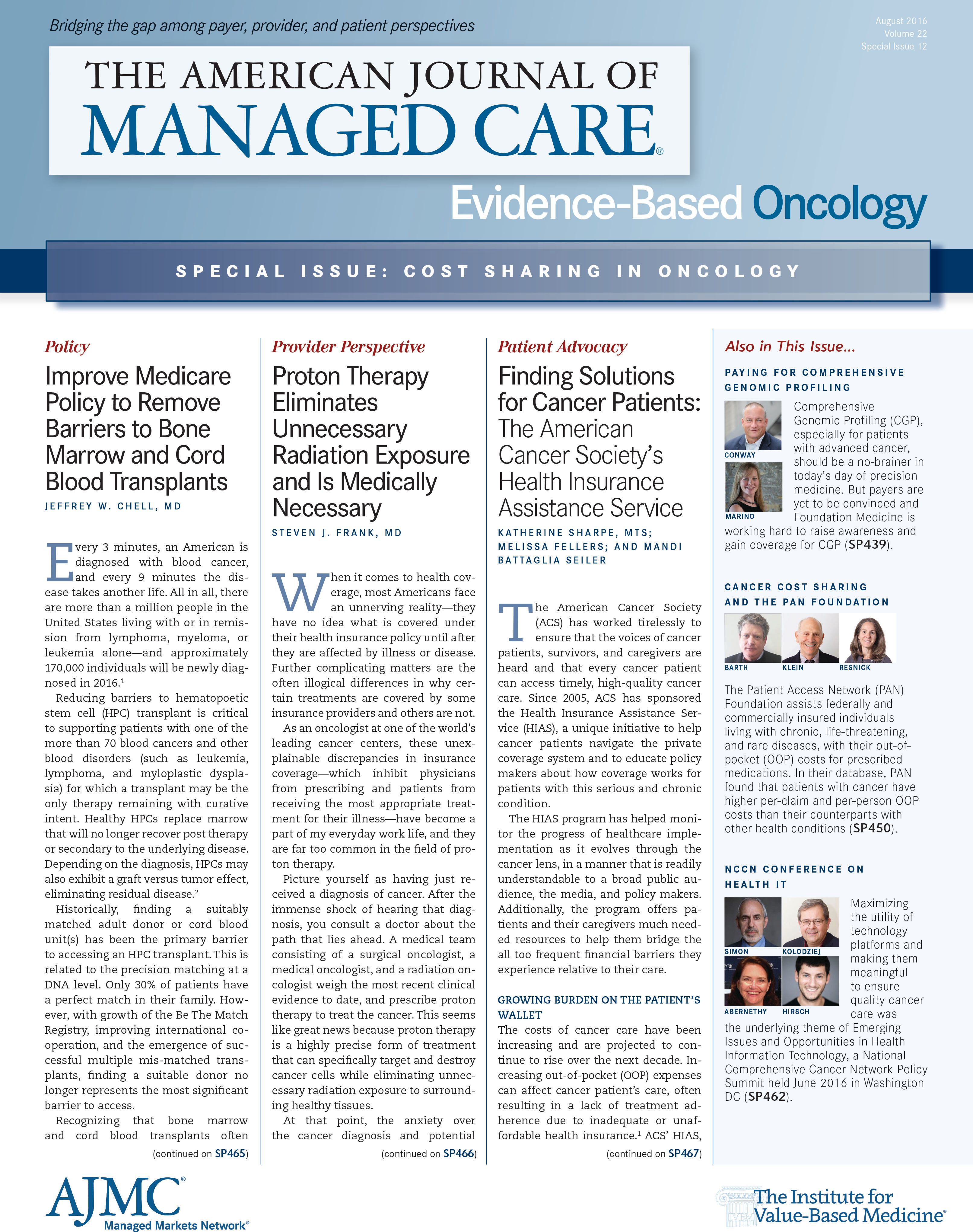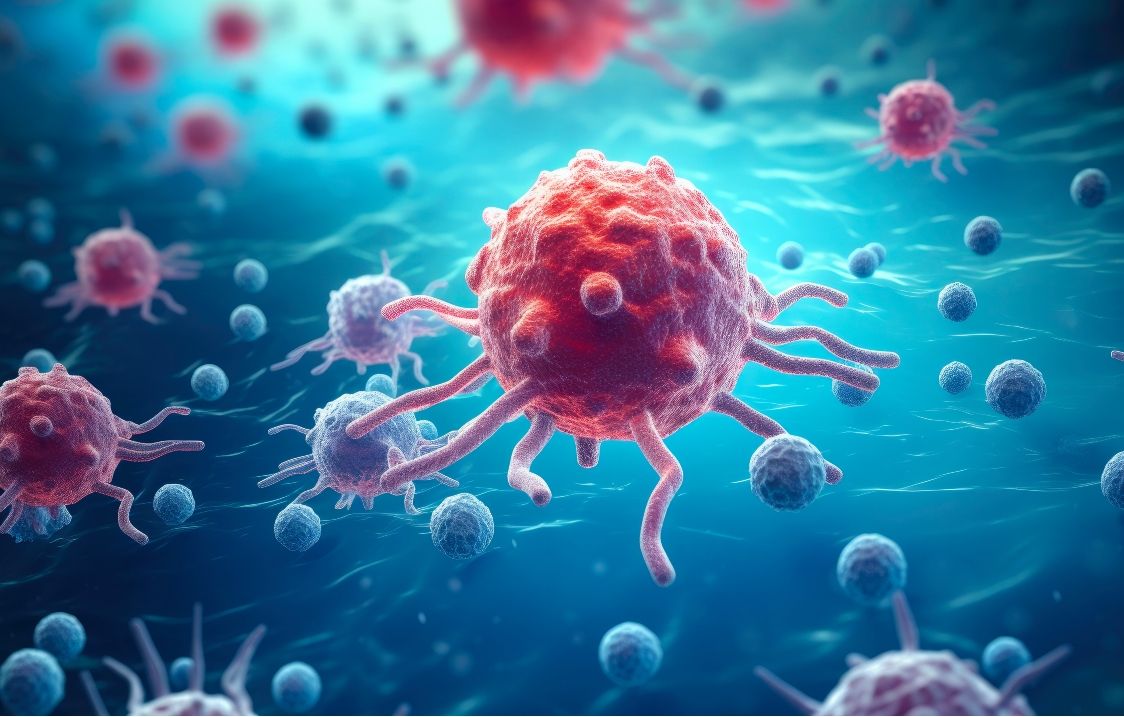Publication
Article
Evidence-Based Oncology
The Toll of Cancer Care - Clinical and Financial Toxicity
Author(s):
This issue of Evidence-Based Oncology is dedicated to understanding the implications, scope, and opportunities within the realm of cost sharing in oncology.
These are times of extraordinary change for patients, families, physicians, healthcare systems, and payers who are engaged in the perpetual battle against cancer. For decades, the distant promise of “magic bullets” that could attack cancer with unprecedented effectiveness and safety has now culminated in an era in which molecular diagnostic testing empowers the use of a rapidly growing armamentarium of lifesaving targeted therapeutics. The long-known fears surrounding a new cancer diagnosis are yielding to a new found sense of optimism and soaring rhetoric that heralds a new era of precision medicine and “Moonshot” initiatives.1 Data from the National Cancer Institute (NCI) Surveillance, Epidemiology, and End Results (SEER) Program now show that for the period between 2006 to 2012, 5-year cancer survival rates rose to 66.9%, up from 48.9% for the period between 1975 to 1977 (the initial years of the SEER data registry).2
These successes, however, have not come without significant challenges. The challenge of ensuring that precision medicine solutions can be made equitably available to all patients has involved the growing realization that innovation does not come cheap. The costs of precision-medicine cancer care are enormous. As of 2010, national cancer care costs amounted to $124.6 billion and the NCI predicted that expenditures would grow by 39% through the year 2010.3 The rate of cancer care cost inflation far exceeds the inflation rate for the domestic economy. Cancer care diagnostic testing and pharmaceutical costs are key drivers of this increase. Molecular diagnostic testing costs are rapidly growing and, as of 2010, were projected to exceed $8 billion in annual expenditures.4
In parallel with the growth in diagnostic testing costs, cancer drug costs have also increased in an unprecedented fashion. In the Journal of Oncology Practice, Kantarjian and colleagues noted. The average cancer drug price for approximately 1 year of therapy or a total treatment duration was less than $10,000 before 2000, and had increased to $30,000 to $50,000 by 2005. In 2012, 12 of the 13 new drugs approved for cancer indications were priced above $100,000 per year of therapy.5
This rapid escalation in cancer care costs has had a significant toll on patients and families faced with a cancer diagnosis. The term “financial toxicity” has entered the lexicon in acknowledgement of the profound adverse impact that these costs have had upon patients and their families.6
The issue of cost sharing in oncology care sits squarely at the intersection of our aspirations to deliver precision-medicine solutions while attempting to foster an economically sustainable cancer care system. This issue of Evidence-Based Oncology is dedicated to understanding the implications, scope, and opportunities within the realm of cost sharing in oncology. Our contributors include, The Samfund, which represents young adults and helps to prepare them for the financial implications of a cancer diagnosis through their program, “Finances 101: A Toolkit for Young Adults With Cancer.” Dr Jeffrey Chell, from Be The Match, discusses some of the financial barriers and coverage gaps affecting patients in need of hematopoietic cell transplantation. The Leukemia and Lymphoma Foundation shares its perspective on how the issue of cost sharing may limit access to essential pharmaceutics for patients with blood cancers. Dr Steven Frank, from MD Anderson Cancer Center, shares his perspective on the issue of medical necessity and lends his insights on how higher upfront costs may actually result in decreased long-term costs and improved quality of life for cancer patients.
EBO
As patients, families, physicians, and other stakeholders who battle cancer daily, it is easy to become swept up in the rhetorical poetry of the precision medicine era. Our ongoing challenges, however, are far more prosaic and are grounded in the financial realities of delivering complex, innovative care solutions. As our healthcare system continues to grapple with how best to deliver these solutions in a financially responsible way, conversations such as these may help lay the groundwork for creating the tools that can ensure equitable and sustainable access for all patients. Joseph Alvarnas, MD, is associate clinical professor and director of medical quality and quality, risk, and regulatory management, City of Hope, Duarte, CA. He is also editor in chief of Evidence-Based Oncology.1. Remarks of President Barack Obama—State of the Union address as delivered. The White House website. https://www.whitehouse.gov/the-press-office/2016/01/12/remarks-president-barack-obama-—-prepared-delivery-state-union-address. Published January 13, 2016. Accessed August 3, 2016.
2. Browse the SEER cancer statistics review 1975-2013. National Cancer Institute website. http://seer.cancer.gov/csr/1975_2013/browse_csr.php?sectionSEL=1&pageSEL=sect_01_zfig.09.html. Accessed August 3, 2016.
3. Mariotto AB, Yabroff KR, Shao Y, Feuer EJ, Brown ML. Projections of the cost of cancer care in the United States: 2010-2020. J Natl Cancer Inst. 2011;103(2):117-128. doi: 10.1093/jnci/djq495.
4. Molecular diagnostic testing presents $5 billion conundrum. Managed Care magazine website. http://www.managedcaremag.com/archives/2009/4/molecular-diagnostic-testing-presents-5-billion-conundrum. Published April 2009. Accessed August 3, 2016.
5. Kantarjian H, Steensma D, Rius Sanjuan J, Elshaug A, Light D. High cancer drug prices in the United States: reasons and proposed solutions. J Oncol Pract. 2014;10(4):e208-e211. doi: 10.1200/JOP.2013.001351.
6. Johnson CY. The burden of cancer isn’t just cancer. The Washington Post website. https://www.washingtonpost.com/news/wonk/wp/2016/04/08/cancers-sinister-side-effect-financial-toxicity/. Published April 8, 2016. Accessed August 3, 2016.






